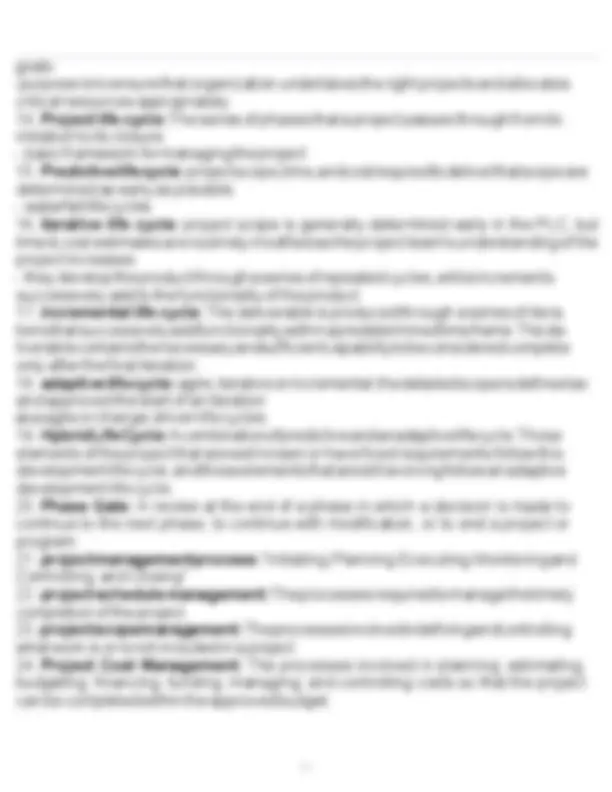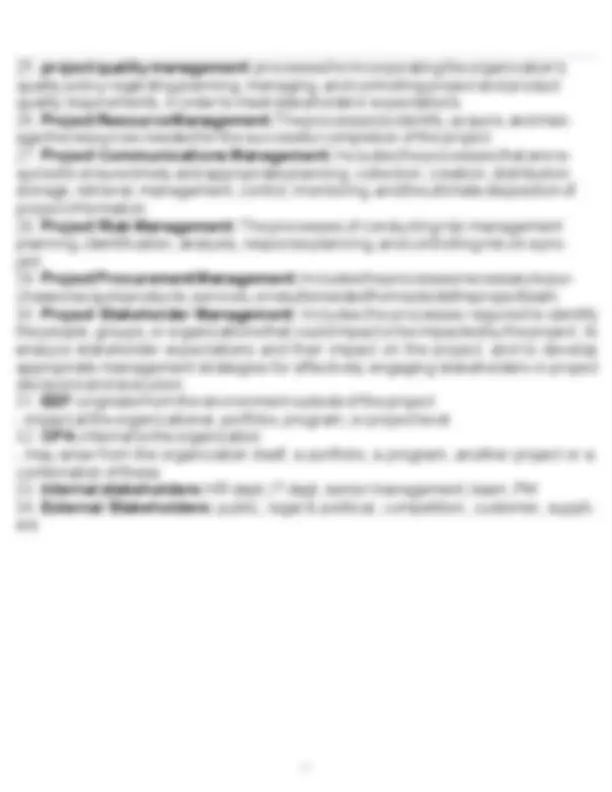1. tailoring: necessary bc each project is unique; not every process, tool, technique,
input, or output identified is required on every project.
- this should address the competing constraints of scope, schedule, cost, resources,
quality, risk
2. Project business case: Created and maintained by the project sponsor and
shows the financial validity of why a project is chartered and launched within the
organization. Typically, this is created before the launch of the project and may be
used as a go/no-go decision point.
3. Project benefits management plan: A documented created and maintained by
the project sponsor and the project manager. It defines what benefits the project will
create, when the benefits will be realized, and how the benefits will be measured.
4. Project Charter: A document issued by the project initiator or sponsor that
formally authorizes the existence of a project and provides the project manager with
the authority to apply organizational resources to project activities.
5. Business Value: A concept that is unique to each organization and includes
tangible and intangible elements. Through the effective use of project, program, and
portfolio management disciplines, organizations will possess the ability to employ
reliable, established processes to meet enterprise objectives and obtain greater
business value from their investments.
6. tangible element: monetary assets, stockholder equity, utility, fixtures, tools and
market share
7. intangible element: goodwill, brand recognition, public benefit, trademarks,
strategic alignment, and reputation
8. project management: application of knowledge, skills, tools, and techniques to
project activities to meet project requirements
9. Program: A group of related projects, subprograms, and program activities man-
aged in a coordinated way to obtain benefits not available from managing them
individually.
10. Portfolio: projects, programs, subsidiary portfolios, and operations managed as
a group to achieve strategic objectives
11. Portfolio Management: The centralized management of one or more portfolios
to achieve strategic objectives.
- guide organizational investment decisions, select the optimal mix of programs/pro-
jects, provide decision-making transparency, prioritize team/physical resource allo-












